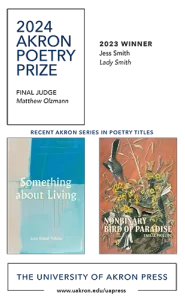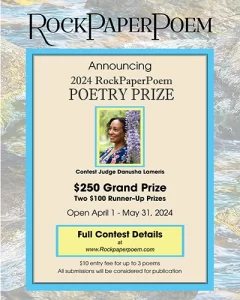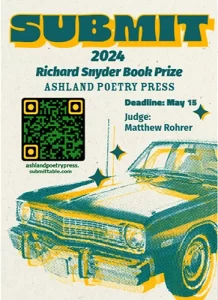Phantom Drift – Fall 2012
Issue 2
Fall 2012
Annual
Julie J. Nichols
Here, complete, is Mathias Svalina’s “Poetry Prompt: Reformation” from this thoroughly intriguing second issue of Phantom Drift:
Here, complete, is Mathias Svalina’s “Poetry Prompt: Reformation” from this thoroughly intriguing second issue of Phantom Drift:
Step one: Break all of the bones in something that has no bones. Preferably something that has nothing even close to bones, like a flashlight or a memory.
Step two: Reform all of the bones so that the thing works in an entirely new way.
Step three: Ask the rearranged thing what its experience as the new thing is like. Write down everything it says. This set of words are all the words you are allowed to use in the poem.
Step four: Write a poem that catalogues all the pains you’ve ever experienced.
Step five: The title of the poem is the name of the new, reformed thing.
This seems to me the perfect encapsulation of what “new fabulism” is. Though Leslie What thoughtfully defines it in the essay that opens the issue, Svalina’s prose poem seems to me to name what every other piece in the issue actually does. In “The Genre That Dares Not Say Its Name,” What provides a dozen other names for “new fabulism”: “Slipstream . . . Magical Realism, Fabulist Fiction, Transrealism, New Weird . . . It is rooted in folk tale, religious belief, magic, surrealism, and superstition. Fabulist writing blends literary tropes with fantastic conceits, and in the process frees fiction from the limitations of realism.” But refer to Svalina: quite simply, new fabulism ‘rearranges the bones’ of our thoughts so that they, and fiction, work in an entirely new way. This is a wonderful magazine, an awesome one—full of wonder, with some (lots of) awe.
Take “Skiing With Dostoyevsky” by David Axelrod. There’s Dostoyevsky, “one-hundred-eighty years old, give or take, and he’s skiing no worse today than he did a century ago, refusing to concede time to anybody, least of all to Time,” and there’s the narrator, irritated and wearied by last week’s long cross-country ski race, and there’s FD again, waiting for him at the finish line with remorseless Dostoyevskyisms, leaving him no recourse but to concede, himself. Short. Impossible. Perfect-pitch.
New fabulism isn’t just fun. Re-forming time and perception into twisted mirrors of their former selves, the pieces in this issue are symbolic, metaphorical. Then you ask, “Really? Aren’t we to take them literally—isn’t reality exactly like that?” In Chris Gavaler’s “Isn’t,” for example, the narrator’s named “Is,” but the reader doesn’t know, ever, whether the streets Is travels are or aren’t. The last third of the story turns her into “Isabel,” and her boyfriend becomes the relentless questioner the reader has been for the first two thirds. But she leaves him, as we are left. The “meaning” isn’t a concrete truth. It’s belief, it’s Is’s experience, the horror on those spectral streets of seeing her father betray her mother and not knowing how it could possibly happen. Was it here? Was it there? Do the streets still exist? To try to get her to pin the experience down is to deny her reality. To deny her. So we ought not to do it. That’s the point.
Shadows, ghosts, monsters, moonlight—whatever slithers just in the periphery of vision—this is the stuff of new fabulism. “Sunrise with Sea Monsters,” a story by Care Santos (translated by Lawrence Schimel), evokes a visitation from a deceased father. It’s made from the ache of desire for the kind of visit everyone wants, that final approval just out of reach. Elizabeth Schumacher’s two monster poems, “Feejee Mermaid” and “Iroquois Flying Head” follow Nate Liederbach’s “We Prepared Him,” in which “the humps of [the title character’s] hour-glass thorax bulg[ed] as half of us chiseled dirt from below those bifolded shoulders” and the “keen metal dew-claws” of his feet twitch. After the midnight fight, when “he” must meet the awful female champion, he confesses he is afraid, and the “we” of the title slink away, ashamed. It’s “The Lottery” with monsters, in moonlight, and it’s just—like—life.
What we can see, what we can’t; what we can imagine just beyond that which we prefer not to—these, too, are the stuff of new fabulism. Sadie, in Jessica Reisman’s “Boneshadow,” can see “bits and flashes, motions and beings. The world behind, the world within the world.” Which of us doesn’t know this world exists? Which of us strains to see it, which strains not to? New fabulism reminds us remorselessly that it’s there, whether we confront it or run away.
Dennis Ginoza’s “Other Names, Other Histories” juxtaposes a doubting priest, a riven city, and a revenant, rearranging for the characters and for the reader the story of Christ crucified. Bruce Holland Rogers gives us “The Midlife Forecast for Men” where “Behind this band of disappointment you can see the counter-clockwise motion of mortality pressure, and that’s going to draw disillusionment up from the south making for a powerful combination by the time it reaches us.” It’s funny, yes, but it’s also symbolic, and it’s also true. Every title beckons toward a “new, reformed thing.” Even the nonfiction—several reviews and essays—rearrange the reader’s mind. This is not a magazine to take lightly, but it sparks with light of many kinds. I’ll subscribe in an instant.
[www.wordcraftoforegon.com/pd]




